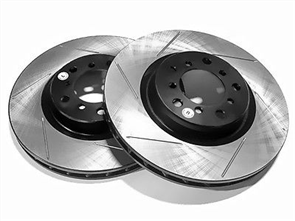Deciphering the Dynamics- Understanding Disc Brake Rotors
Introduction
In automotive engineering, the
brake system is the cornerstone of safety and performance. At the heart of a
modern disc brake system is a vital component.
the disc brake rotor. Often
overlooked but important, disc brake rotors play a key role in ensuring
efficient and reliable braking. In this article, we delve into the world of
disc brake rotors, examining their functions, types, maintenance and importance
for car safety.
Functions of disc brake rotors
Disc brake rotors, also commonly
called brake rotors or brake rotors, are circular metal discs that are mounted
in the wheel arches of a vehicle. They work together with the brake calipers,
brake pads and hydraulic system to support the braking and stopping process.
When the pedal is depressed, hydraulic pressure is applied to the brake
calipers, forcing them to grip the disc brake rotors. This action creates
friction between the brake pads and the output rotor, converting kinetic energy
into thermal energy. As a result, the wheels are slowly rotated, bringing the
vehicle to a controlled stop.
Types of disc brake rotors
Disc brake rotors come in a
variety of styles, each designed to meet specific performance requirements and
driving conditions.
Standard Rotors Standard disc rotors are usually made of cast
iron and have a rigid, one-piece construction. They are suitable for everyday
driving and provide reliable braking performance under normal operating
conditions.
Slotted Rotors Slotted disc
brake rotor have slots or shallow grooves embedded in their surfaces.
These holes help to improve the performance of the brakes by promoting the
escape of gases and debris that can build up between the surface of the brake
and the rotor during braking.
Slotted Rotors Slotted disc brake rotors are rotors that have
slotted holes on their surface. These spaces allow heat dissipation and fluid
circulation, reducing the risk of brake failure and improving braking
performance, especially when driving at high speeds or while driving. violence.
Vented rotors Vented disc rotors have holes or fins in the
middle of the friction point. These vanes help in dissipating the heat
generated during braking, thereby improving thermal efficiency and reducing the
risk of rotor warping or brake failure, especially in service heavy or high
performance.
Maintenance and care Proper care and maintenance of brake disc
rotors is essential to ensure optimum brake performance and longevity.
Here are some basic
maintenance practices
Regular inspection check
the condition of the disc brake rotors for signs of wear, scratches or damage.
Replace damaged or excessively worn rotors to avoid impaired brake performance
and potential safety hazards.
Brake Replacement Replace the brake pads at the manufacturer's
recommended intervals to prevent excessive wear and damage to the disc rotors.
A worn brake pad can cause the rotor to wear poorly and reduce braking
effectiveness.
Cleaning Clean the brake disc rotors and brake
calipers regularly to remove dust, dirt and debris. Use the proper brake
cleaner and wire brush to ensure proper contact and brake performance.
Break-in Procedure When installing new brakes or rotors, follow
the manufacturer's recommended break-in procedure to ensure optimal
transmission and brake retention. This system helps increase brake performance
and reduces the chance of noise, vibration and unnecessary wear.
Importance of Disc Brake
Rotors Disc brake rotors play an
important role in the overall safety, performance and reliability of a
vehicle's braking system. Their ability to dissipate heat, provide consistent
friction and withstand repeated brake application processes is the most important
factor for good and effective braking, especially in emergency situations or
poor driving conditions. In addition, advanced disc
brake rotor contribute to a more responsive driving experience,
improving driver confidence and control. By investing in premium rotors and
following proper maintenance procedures, vehicle owners can ensure optimal
brake performance for themselves and other road users.
Conclusion
In conclusion, disc brake rotors
form the backbone of a modern car's braking system, providing the frictional
surface necessary for braking and stopping. Their design and variety meet the
needs and driving situations, from daily commuting to high-performance driving.
By understanding the function, type, maintenance and importance of disc brake
rotors, vehicle owners can make informed decisions about brake system upgrades,
replacements and maintenance intervals.

Comments
Post a Comment